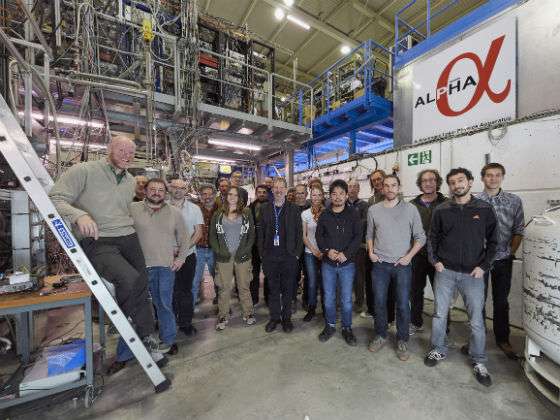Paper reveals the theory behind ALPHA antihydrogen breakthrough

New research by a team from Aarhus, Swansea, and Purdue Universities has enabled recent experiments to make the first measurement of the 1S – 2S atomic state transition in antihydrogen.
In the paper, published in the Journal of Physics B: Atomic, Molecular and Optical Physics, a theoretical approach is developed for the ALPHA experiment at CERN, and provides the insight needed to make high precision spectroscopic measurements of the transition energy between the 1S and 2S energy levels.
As a result, successful measurements have now been made to a precision of better than one part in a billion.
According to lead author Dr Chris Rasmussen: "The calculations presented here enabled the first observation of the 1S-2S transition in antihydrogen by the ALPHA collaboration, which has been a long sought goal of the antimatter community."
The research presented by Dr Rasmussen, Professor Niels Madsen, and Professor Francis Robicheaux, also points the way forward to even higher precision measurements of the properties of antihydrogen.
The physical arrangement for the experiments is highly complex, and so far only a handful of antiatoms can be trapped at a time – typically fewer than 20. This means careful consideration needs to be given to the conditions of any measurement, to ensure the desired high precision can be reached.
The authors performed a series of calculations and simulations to determine a viable experimental method for precision measurements, considering both the details of the apparatus and the low number of antiatoms available for the experiment.
Antihydrogen research has been underway for many years, but it is only recently that neutral antihydrogen has been able to be trapped for use in spectroscopy. One of the ultimate goals of this research is to make high precision tests of CPT invariance by comparing the energy level structure of antihydrogen with its matter counterpart – hydrogen.
This then becomes a strict test of our understanding of how the universe came to be in its current state, as well as of the fundamental rules governing nature. Current data for hydrogen reaches and accuracy of a few parts in 10-15, and future antihydrogen measurements aim to match this.
Dr Professor Madsen said: "These measurements ultimately aim to compare hydrogen and antihydrogen at the level of the spectacular detail to which hydrogen has been probed, to assist in answering why the Universe appears, unexpectedly, to be devoid of antimatter."
More information: C Ø Rasmussen et al. Aspects of 1S-2S spectroscopy of trapped antihydrogen atoms, Journal of Physics B: Atomic, Molecular and Optical Physics (2017). DOI: 10.1088/1361-6455/aa854c
Journal information: Journal of Physics B: Atomic, Molecular and Optical Physics
Provided by Institute of Physics




















